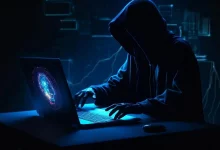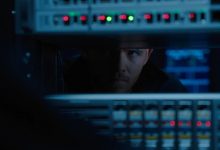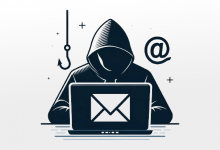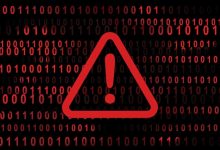Locard’s Principle in Digital Forensics
Uncovering the Footprints of Cybercrime
Digital forensics is an evolving field of investigation[1] that plays a crucial role in the modern world, where digital devices and networks are evolving. In this digital age, crime has also taken on a digital dimension, making it necessary to adapt traditional investigative principles to the virtual realm. One such principle that holds significant relevance in digital forensics is “Locard’s Principle of Exchange“[2] [3]. This principle, which Dr. Edmond Locard established, asserts that “with contact between two items, there will be an exchange.” While originally formulated for physical forensics[4], Locard’s principle finds a natural extension in the realm of digital investigations, helping forensic experts uncover cybercrime footprints left behind in the digital ecosystem.
Locard’s Exchange Principle can be applied to digital cybercrime investigations. The principle states that “every contact leaves a trace.” This means that when two objects come into contact, they will exchange some material. In the context of digital forensics, this would mean that when a cybercriminal interacts with a computer system, they will leave behind some digital evidence of their presence. This evidence can be used to identify the cybercriminals and their activities.
In this article, we will explore Locard’s Principle and its application in digital forensics. We will delve into how the digital world leaves its own trail of evidence and how forensic experts leverage this principle to trace cybercriminals, investigate digital incidents, and safeguard our increasingly interconnected world.
I. Locard’s Principle: A Foundation in Forensics
Dr. Edmond Locard, a French criminologist, established his eponymous principle in the early 20th century while working as the director of the world’s first forensic laboratory in Lyon, France. His pioneering work laid the foundation for modern forensic science. Locard’s Principle essentially asserts that whenever two objects come into contact, there is a transfer of material between them. In the context of physical forensics, this principle has been instrumental in solving crimes for decades as it forms the basis for trace evidence analysis.
Locad wrote that “It is impossible for a criminal to act without leaving traces of this presence, especially considering the intensity of a crime”. In the digital realm this principle can be applied as well.
II. Extending Locard’s Principle to the Digital Realm
In the digital age, people leave a trail of digital footprints wherever they go. This includes interactions with computers, smartphones, tablets, and the internet at large. Locard’s Principle, originally designed for physical objects, naturally extends to digital forensics[5]. Here’s how it works:
- Data Exchange: Every interaction with digital devices involves data exchange. Whether it’s sending an email, browsing a website, or using a social media platform, these actions leave behind traces in the form of data packets, logs, or artefacts.
- Cybercrime Evidence: In cases of cybercrime, perpetrators often believe they can operate anonymously and without leaving any evidence. However, digital forensics experts apply Locard’s Principle to trace their activities. For example, when a hacker gains unauthorised access to a system, they may leave behind login records, IP addresses, or malware signatures.
- Persistence of Data: Unlike physical evidence, digital evidence can persist for a long time, often indefinitely. In the digital ether, deleted files might still be present and waiting for forensic tools to find them. This persistent nature of digital data is a boon for investigators.
III. The Role of Digital Forensics in Cyber Investigations
Digital forensics is instrumental in solving cybercrimes, which encompass a wide range of illicit activities conducted through or against digital devices and networks. Some key areas where Locard’s Principle is applied in digital forensics include:
- Incident Response: When a security breach occurs, digital forensic experts are called in to investigate. They follow the traces left by the attacker, which can include log files, network traffic, and malware artefacts. Locard’s Principle guides them in understanding the exchange of data during the breach.
- Cybercrime Prosecution: To build a strong case against cybercriminals, forensic experts must trace the origin of malicious activities. This involves examining servers, analysing communication records, and identifying the source of the attack.
- Digital Device Analysis: In cases involving digital devices such as computers, smartphones, or IoT devices, investigators use Locard’s Principle to extract data and artefacts. Deleted files, chat logs, and timestamps can all provide critical insights into a suspect’s activities.
- Network Forensics: Monitoring network traffic is a fundamental aspect of digital forensics. Suspicious network activity can indicate a security breach or cyberattack. By analysing network logs, experts can uncover the exchange of data between the attacker and the victim.
IV. Practical Application of Locard’s Principle in Digital Forensics
To effectively apply Locard’s Principle in digital forensics, investigators follow a structured approach:
- Evidence Preservation: Just as in physical forensics, the first step is to secure the crime scene. In digital forensics, this means isolating and preserving the affected digital systems and networks to prevent data tampering.
- Data Collection: Investigators collect data from various sources, including devices, servers, and network logs. This data may encompass files, emails, registry entries, and more.
- Data Analysis: Using specialised forensic tools and techniques, experts analyse the collected data to uncover hidden information, anomalies, and traces of suspicious activity. This analysis often involves examining timestamps, file metadata, and communication patterns.
- Chain of Custody: Maintaining a chain of custody is essential to ensuring the integrity of digital evidence. This documentation records every person who had contact with the evidence, following the principles of Locard’s exchange.
- Documentation and Reporting: Forensic experts meticulously document their findings, ensuring that they can explain how they arrived at their conclusions. This documentation is crucial for legal proceedings.
- Expert Testimony: In court, digital forensic experts may provide expert testimony based on their findings. They explain how Locard’s Principle guided their investigation and how it led to the identification of the perpetrator or the evidence supporting a case.
Digital evidence, sometimes referred to as forensic artefacts, is the very trace of a digital forensic inquiry. Real-world examples are the most effective means of comprehending the significance of digital evidence.
On April 8, 2006, at midnight, the 911 dispatcher received a call from Matt Baker[6], a minister at Crossroads Baptist Church in Hewitt, south of Waco. Baker said he had just returned home and found his wife, Kari, unconscious in their bedroom. The dispatcher told him to perform CPR while he waited for emergency responders. Firefighters and EMS arrived but were unable to revive Kari; she was pronounced dead at the scene.
The wife of Matt Baker purportedly committed suicide in 2010, but it was discovered through a digital forensic examination that Matt Baker overdosed on his wife, which was the cause of her death. The proof was discovered in Matt Baker’s search history, where he looked for overdosing before his wife passed away. It would have gone undiscovered if there had not been a digital forensic investigation.
Ross Compton, 62, who allegedly set fire to his Middletown house in 2016, was charged with aggravated arson and insurance fraud. The blaze on Court Donegal caused nearly $400,000 in damages. Compton, who was indicted in January 2017, was arrested based in part on data taken from his pacemaker[7].
A little pacemaker’s worth of evidence can also be considered a forensic artefact, in addition to the evidence from the laptop. This particular Pacemaker relic was used as proof in Ross Comptown’s 2017 insurance fraud conviction. As a result, digital evidence can make or break cybercrime cases.
V. Challenges and Ethical Considerations in Digital Forensics
While Locard’s Principle is a powerful tool in digital forensics, it comes with its share of challenges and ethical considerations.
- Data Encryption: The increasing use of encryption technology can hinder digital forensic investigations as it can make it difficult to access data. Investigators must strike a balance between privacy and the need for evidence.
- Chain of Custody: Maintaining a secure chain of custody for digital evidence can be challenging, especially in cases involving remote digital devices or cloud storage.
- Data Volatility: Digital evidence can be highly volatile. It can be changed or deleted with the click of a button. This makes quick and efficient responses crucial in digital investigations.
- Ethical Use of Data: Digital forensic experts must adhere to strict ethical guidelines, ensuring that their investigations respect privacy and comply with legal regulations.
Conclusion
Locard’s Principle, originally formulated for physical forensics, seamlessly applies to the world of digital forensics. In our increasingly interconnected and digitised society, cybercrimes are on the rise, necessitating the use of advanced investigative techniques. Digital forensics experts leverage Locard’s Principle to trace the digital footprints left by cybercriminals and uncover crucial evidence. This principle underscores the importance of data exchange and persistence in the digital realm.
As technology continues to evolve, so will the challenges and opportunities in digital forensics. Investigative techniques will need to adapt to address encryption, data volatility, and ethical considerations. Nonetheless, Locard’s Principle remains a foundational concept that guides digital investigators in their pursuit of justice and the safeguarding of communities.
[1] Vol Arafat Al-Dhaqm and others, ‘Digital Forensics Subdomains: The State of the Art and Future Directions’ (2021) 9 152476, 152476–152502 <https://ieeexplore.ieee.org/document/9594835>9, 2021.
[2] Graham Gooch and Michael Williams, ‘Locard’s Principle’ <https://www.oxfordreference.com/view/10.1093/acref/9780192807021.001.0001/acref-9780192807021-e-1927>.
[3] Asif Iqbal, Johannes Olegard and Ranjana Ghimire, ‘Digital Forensic Evidence – The Missing Link in Threat Modeling’ (IEEE 2020) 1–5 <https://ieeexplore.ieee.org/document/9325650>.
[4] Chap. Ryan Blumenthal, Risking Life For Death (1st edn, Jonathan Ball 2023) <https://ebookcentral.proquest.com/lib/[SITE_ID]/detail.action?docID=30621421>2.
[5] Iqbal, Olegard and Ghimire 1–5.
[6] Crawford Long and Susan Shafer, ‘The Murdering Minister’ <https://www.tdcaa.com/journal/the-murdering-minister/> accessed 25 September 2023.
[7] Lauren Paxk, ‘Prosecutor: Man Awaiting Arson Trial in Middletown Pacemaker Case Dies’ (2020) <https://www.journal-news.com/news/crime–law/prosecutor-man-awaiting-arson-trial-middletown-pacemaker-case-dies/PORi20NIKa8ONyVZis7RvN/> accessed 25 September 2023. Paxk.





